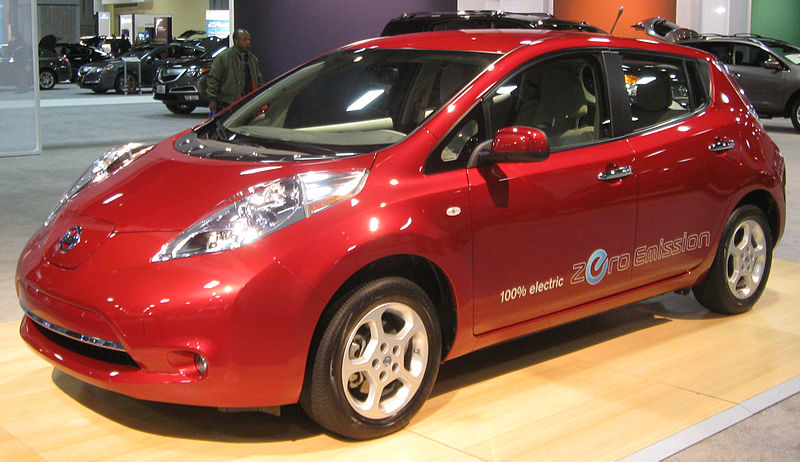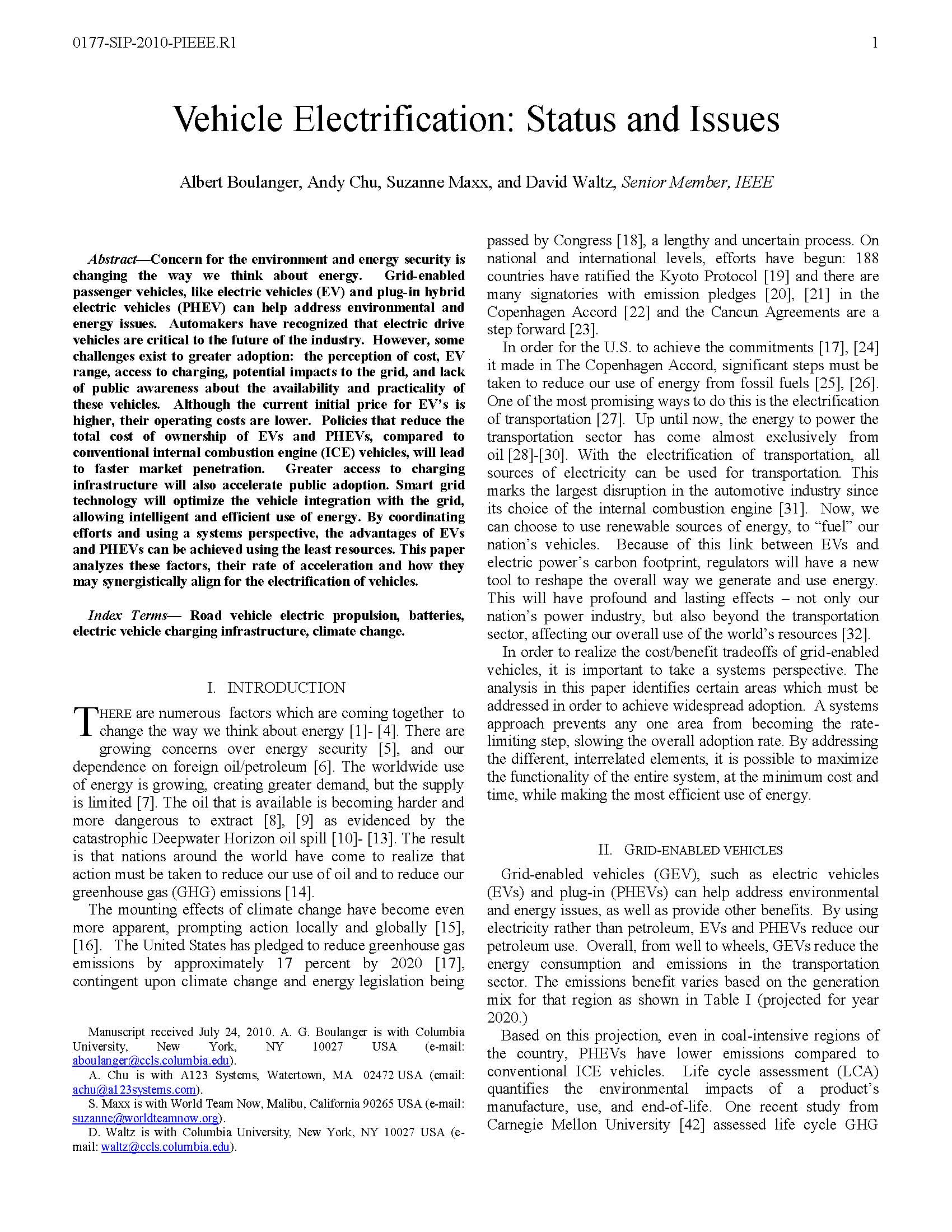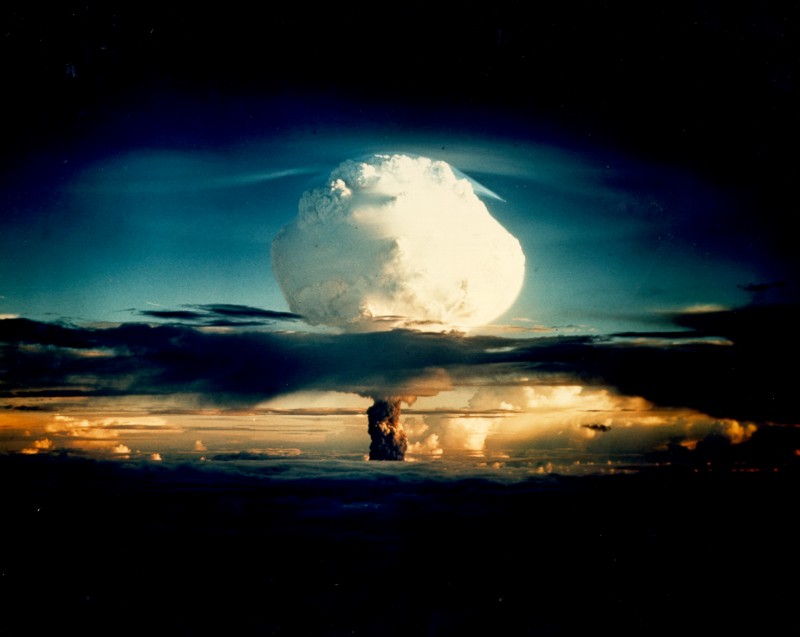There are small solutions to environmental challenges that may have a big impact with electric vehicles, renewable energy, and the smart grid. Large environmental problems like the ongoing Fukushima nuclear catastrophe and the effects of the BP Deepwater Horizon Oil Spill in the Gulf of Mexico still loom, but one of the solutions to the planet’s environmental woes is rapidly approaching. Vehicle electrification can ease dependence on polluting petroleum that contributes to climate change, yet many people are not fully informed on how electric vehicles will fit into their lives. One information gap is public understanding of the important fit between electric vehicles (EVs) and the smart grid.
There is a game changing research paper that shows we can transform the energy equation – “Vehicle Electrification: Status and Issues,” it was just published in the special Smart Grid issue of The Proceedings of The Institute of Electrical and Electronics Engineers (IEEE). It shows we can change the energy equation, serving as a reference source to understand electric vehicles from a whole systems perspective.
Many people do not realize there are many electric vehicles available, and the size of this EV wave now breaking. Here is an original chart of new grid enabled vehicles (GEV) to use as resource. Choose the new electric vehicle you want to see from small tabs at the bottom of the page where vehicles are divided into categories; Battery Electric Vehicles (BEV), Plug in Electric Vehicles (PEV), Plug in Hybrid Electric Vehicles (PHEV).
This EV paper is timely and important since the case for electric vehicles needs to be more clearly understood, from the point of view of public perception and long term evaluation. The research and statistics presented will gain value over time when people need to cite sources to accelerate the transition to a renewable energy global economy.
EV’s and the Smart Grid are two topics that present solutions at a time the planet is challenged to live in balance with our natural resources regarding energy generation. A key functionality of a smart grid is the intelligent management of distributed sources of power derived from renewable energy sources such as solar, wind, tidal, etc. It is important that renewable energy can be paired with energy storage for a more adaptable power grid; this is one of the key features of the smart grid article.
To adapt to the moving electrical loads that are EVs is one of the major design goals for the smart grid. EVs also potentially offer valuable energy storage capabilities for smart grids (Vehicle to Grid).
World Team Now (WTN) board members Albert Boulanger and Suzanne Maxx teamed up with Andy Chu of A123 Systems Inc. and Dave Waltz of Columbia University’s Computational Learning Systems (CCLS) for the IEEE paper Vehicle Electrification: Status and Issues—a topic that offers solutions to our environmental challenges. World Team Now, our California and New York based non-profit organization, raises public awareness about renewable energy solutions, like the EVs. We recently worked with The City of Malibu (Click Here for EV Campaign) to secure a grant to get their electric vehicle chargers working and upgraded too.
To make the transition to vehicle electrification, the public needs to understand how their transportation choices play into the big picture. Each individual has the opportunity to carve out his or her own role in this change by making educated choices with what we drive and how we live.
Here is a new original chart of grid enabled vehicles (GEV) to use as resource in making these choices.At the bottom of the image you an click on the tab to view vehicles in each of these categories;
“Karma,” (the vehicle) from Fisker Automotive made its production debut this past weekend at the Monaco Grand Prix. Back in 2005, World Team Now worked to build an alternative vehicle parade to premiere at Monaco’s Grand Prix. The Sovereign Prince of Monaco, Albert the 2nd, was behind the wheel and founder Henrik Fisker rode shot gun—fulfilling a long anticipated coming of a high end electric sports car with the innovation to also take gasoline, if necessary.
Fisker’s Karma lives up to its name. Its good Karma resides in its solar roof, LED lights, and use of recycled and reclaimed components. It is a more than a transition vehicle while the full-on vehicle infrastructure is being built to support EV charging. The Karma is one of the greenest cars on the market—cradle to grave—when it is charged every 100 miles via solar, or other renewable energy source. Marketing Director Roger Ormisher said, “We should have the car rolled out with dealers and customers in August at the latest.” Fisker also plans to have its own charge points, according to Ormisher.
In Baden-Baden Germany, June 9 is the last day of the IEEE conference on Intelligent Vehicles. Vehicle intelligence, the ability of vehicles to talk to other vehicles, can enhance safety and ease traffic flow. Intelligent vehicles with driver assist features can act like remote sensors to following vehicles and even eventually drive the following vehicle in emergency situations.
A considerable obstacle to EV adoption is public perception. The IEEE Paper goes into this in-depth. The newly released film the Revenge of the Electric Car has a commercial appeal with an important story to help engage the public.
Auto executives understand that gap is a challenge for EV adoption and each manufacturer has different approaches to meet it.
GM believes that range anxiety is a key challenge. In an interview, Tony Posawatz, Chevy Volt Line Director, called the Chevy Volt a “connected electric vehicle” with the rollout standard OnStar for a period of time. The OnStar tracking system and technology is why Posawatz said, “We believe that the Chevy Volt will be the smartest device on the Smart Grid.” That confidence is based on a “special relationship” managed through the Electric Power Research Institute where General Motors has engaged a about 50 of EPRI’s utilities to work together on everything from standards to rollout to communication plans to interfaces, to smart grid solutions.
 Nissan is using vertical integration and making a significant investment in EVs to bring costs down faster than its competitors. In a private interview, Mark Perry, director of planning, Nissan North America explained their first mover’s advantage in the United States, with the reasonably priced, “All Electric Zero Emissions Vehicle, the Nissan Leaf and mass media internet campaign.” Nissan is also a supporter of Level 3 DC fast charging, unlike most other automakers. Their strategy is to deploy infrastructure across six states with multiple DC fast-charging stations.
Nissan is using vertical integration and making a significant investment in EVs to bring costs down faster than its competitors. In a private interview, Mark Perry, director of planning, Nissan North America explained their first mover’s advantage in the United States, with the reasonably priced, “All Electric Zero Emissions Vehicle, the Nissan Leaf and mass media internet campaign.” Nissan is also a supporter of Level 3 DC fast charging, unlike most other automakers. Their strategy is to deploy infrastructure across six states with multiple DC fast-charging stations.
The Chinese battery and automaker BYD has less experience, but more to gain, and is pursuing EVs partly due to their simpler engineering. Paul Lin, spokesman for BYD, said in a private interview that the company also takes advantage of vertical integration but is not bound by legal and liability constraints that other manufacturers face. The lower requirements of the domestic Chinese market, and less danger of hurting their brand, allow BYD to be more aggressive than traditional automakers.
Findings from the recent IPCCC Special Report Renewable Energy Sources are based on science that proves renewable energy can provide for 80% of our total global energy consumption.
The IEEE paper explains, “Grid-enabled vehicles (GEV), such as electric vehicles (EVs) and plug-in (PHEVs) can help address environmental and energy issues by using electricity rather than petroleum. Overall, from well to wheels, GEVs reduce the energy consumption and emissions in the transportation sector.”
This paper offers a resource for making personal choices for sustainable transportation that impact the overriding issue of our time – global climate change. T0 read a different version of the article published in Environment News Service (Click Here).











